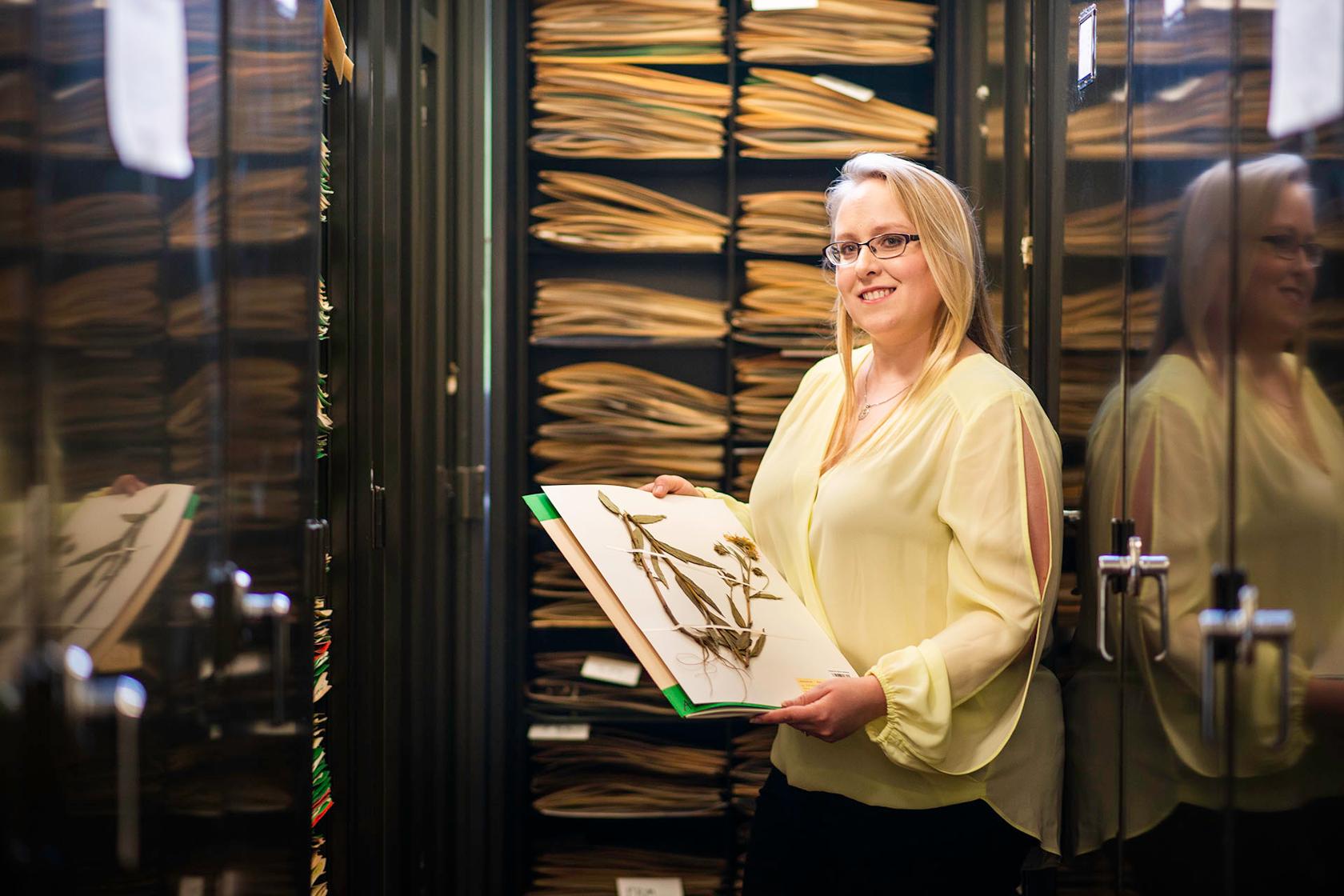The Plant Collector
Wednesday, May 30, 2018 1:00 PM
News, People and Society
Pittsburg, KS

What graduate student Sam Pryer accomplished before receiving her diploma a few weeks ago was especially noteworthy environmentally speaking: she documented 33 plants occurring in Kansas for the first time, and 263 occurring for the first time in Crawford and Cherokee counties.
In her advisor Neil Snow's 35-plus years in botany, he knows of no similar thesis — including his own in 1989 — that documented as many records in any state. The closest competitor: the documentation of 25 state records in New Mexico 10 years ago.
"It's a big deal," Pryer said. "For a regional project like this, for only two counties, to come up with 33, is pretty big. It doesn't happen very often. When we started, we expected maybe three or four."
All told, Pryer reported 1,439 species and subspecies of plants after having collected about 6,500 samples. That's an 18.3 percent increase in known plants for Southeast Kansas — about 9 percent for Cherokee County, and slightly more than a 22 percent increase for Crawford County.
Perhaps surprising to non-scientists, Southeast Kansas has more than half (63 percent) of the floral biodiversity for the state of Kansas. But Pryer isn't surprised: it's where the forested Ozarks meet the grassy plains, with mined land and agricultural areas thrown into the mix, increasing the chances of finding non-native plants.
Process
Pryer's plant collecting spanned two years, as it can only occur when plants are in bloom or are bearing fruit, and that means a short window for each species. She worked closely with local landowners, without whom the project would not have been possible.
"Over 43 percent of my collections were made on private property, where botanists do not usually collect, and I am grateful to them for allowing this kind of work on their land," she said.
She also visited public lands such as the Mined Land Wildlife Area managed by Kansas Department of Wildlife, Parks, and Tourism.
"We call it intelligent meandering," she said of her search. "I looked for places that were different, that might have something growing there – mined land, forests, prairies, the edge of agricultural areas."
A plant survey begins as a slow walk through a given area, where Pryer either pulled up individual specimens from the root or clipped them, depending on their size.
Back at Pittsburg State's Theodore M. Sperry Herbarium, Pryer then carefully pressed them between sheets of paper in a plant press and stored them in a drying cabinet. The herbarium was officially established in 1946 by a biology professor with less than 100 specimens in one cabinet. Through 1974, Sperry expanded it to nearly 40,000 specimens in 35 cabinets. Today, the collection numbers 65,000, ranking it as the third largest in the state.
Pryer used its holdings and field guides to identify her plants. She attached each specimen to a large piece of tagboard along with a label that notes the location and date the specimen was collected, its scientific name, its common name, and the name of the collector. If pressed and dried properly, such specimens can last hundreds of years. It’s a procedure that has been around since the 1500s, when Luca Ghini, an Italian physician and botanist, started what is thought to be the first herbarium.
"Two hundred years from now, scientists can search the herbarium and know what was growing here in Summer 2017," Pryer said.
She also did a 55-year comparison of plants in Crawford county, using her data (and those from other reliable sources) and the results of a 1963 survey based on a PSU thesis by student Earl Gibson.
Importance
Snow, an associate professor of biology who is internationally recognized for his own plant discoveries, and who is director of the herbarium, said such surveys and comparisons are vital: they help scientists and land owners better understand over time how plants are related to one another, how and when and where invasive species begin taking hold, when species began disappearing, and the effects of the climate and human impact on a given area of land.
"More surveys of this type will produce additional discoveries. A number of other studies, like what I did here, have also seen many state and county records reported," Pryer said. "After three floristic surveys in northern New Mexico published since 2008, there were 53 state records reported and one species new to science was described. One we did in Ottaway County, Oklahoma, yielded four state records and 100 county records."